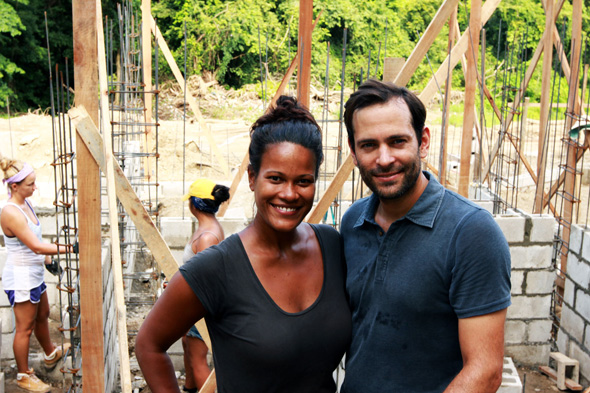Nosara’s New Recycling Center
Architecture students from New York Institute of Technology collaborate with locals in Costa Rica to build a sustainable recycling center.
The main waste-disposal site in Nosara, Costa Rica, lies at the end of a dusty roadway aptly nicknamed “dump road” by locals. There, jungle gives way to a clearing in a small valley. The full sprawl of the garbage is hidden as one enters; instead, visitors first glimpse a smattering of blue and white trash bags that seems almost picturesque, framed by tall purple-flowering trees, as well as mist coming down from the mountains beyond. But a short walk further into the dump site reveals heaps of unsorted trash: biodegradable waste mixed with plastic bottles, fabric scraps, glass, and metal. Large black birds with white wingtips soar above the refuse. Vultures, explains Tobias Holler.
Holler, a part-time Nosara resident, is also an architect and professor at the New York Institute of Technology. He often seeks to teach his students using the “design-build” model. As he explains, “The design-build model is much more common in Germany” where he received his architecture degree. Inspired by the methods behind his own training, he aims to give his pupils similar access to hands-on learning opportunities that involve them closely in construction as well as planning.
Just as Holler sought the perfect project for his students—it had to be “for a good cause,” he said—the Nosara Civic Association was faced with a growing problem: trash, and the lack of adequate infrastructure to process it. In Costa Rica, over sixty percent of garbage ends up going into unregulated dumps. These sites are significantly more ecologically harmful than landfills, which are compacted and monitored and contained so that fewer toxins from the refuse seep into the environment.
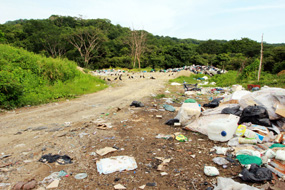 |
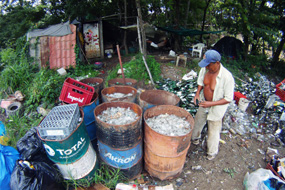 |
And so the idea for the Nosara Recycling Center was born. Holler got his students involved in the design of the center and would bring over twenty-five of them to Costa Rica to collaborate with local construction crews to build a waste management facility right next to the current dump site. The planned complex includes areas for sorting garbage, and will be equipped with compactors that can crush salvaged glass and metal, which the center can then sell to companies that trade in recyclable materials.
Sustainability is a key element of the construction process itself; even the building’s wood comes from pochote trees harvested directly on the site. Meanwhile, because “education is also an important part” of the project, the recycling center will include a viewing area that will accommodate school groups among other visitors.
 |
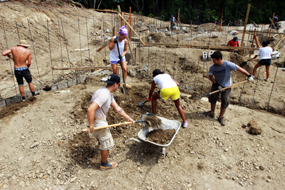 |
Earlier last month, I went with Holler to the construction site, which was then bare earth and a network of foundations. Stepping our way over bundles of rebar, we made our way to the modest, tin-roofed “bodega” which Holler’s team built as a temporary structure that could store materials, review blueprints, and—most importantly—gather for lunch.
From a hammock stretching across the entrance to the bodega, a man named Arnulfo Espinosa Castrillo greeted us, while his white-and-brown dog watched from the shade. As it turns out, Arnulfo is the patriarch of the family that has taken responsibility for the dump. According to Holler, they have, over the years, refined a do-it-yourself method of sorting out recyclables that can be sold for a profit—but the work is backbreaking and involves opening bags of trash, picking out glass bottles, and smashing them by hand into shards small enough for recycling companies to accept. Needless to say, Arnulfo has been eager for the arrival of the compactor machines. (There is a high chance, according to Holler, that Arnulfo will be involved in the center’s operation once it is completed.)
When asked about the challenges and benefits of building in Nosara as opposed to an urban center like New York, Holler notes that there are of course logistical difficulties to working in Nosara. Materials are harder to source and transport. And, early on, they left the bulldozer unguarded for one night, only to find the next day that “someone had stolen all its petrol.” (Now Arnulfo functions as round-the-clock guard at the site.) On the other hand, construction in some ways is easier. “There are fewer building permits required,” says Holler.
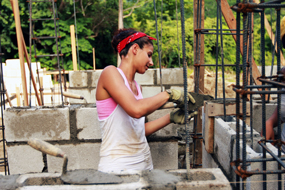 |
 |
Eventually, if the calculations in their business plan are correct, proceeds from the recycling center’s sale of materials will offset its operating costs after a year. In the meanwhile, the Nosara Civic Association has pledged to pitch in financially, even after having donated the land. And Holler’s wife, Ayana de Vos, is creating a documentary that will raise even more awareness of the project. The recycling center has already found an impressive number of committed backers: Its Kickstarter campaign has raised more than $15,000 to fund student housing as well as the costs of de Vos’s film. Says Holler, “The project has tremendous support and momentum in the local community in Nosara.”

